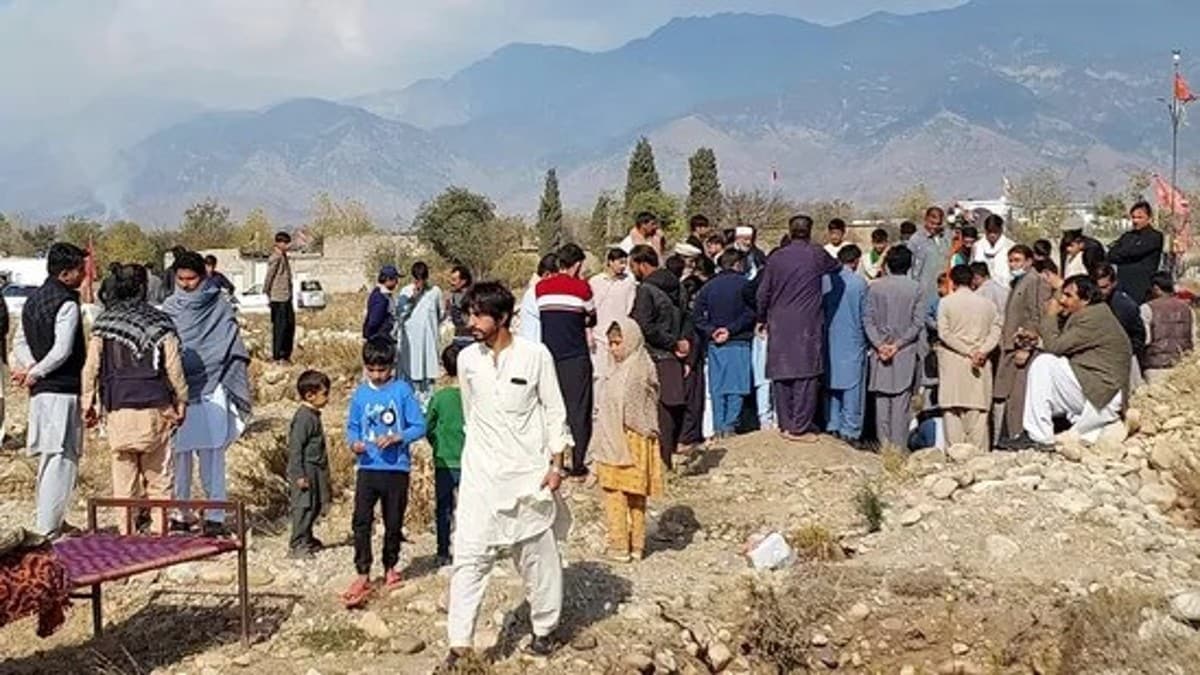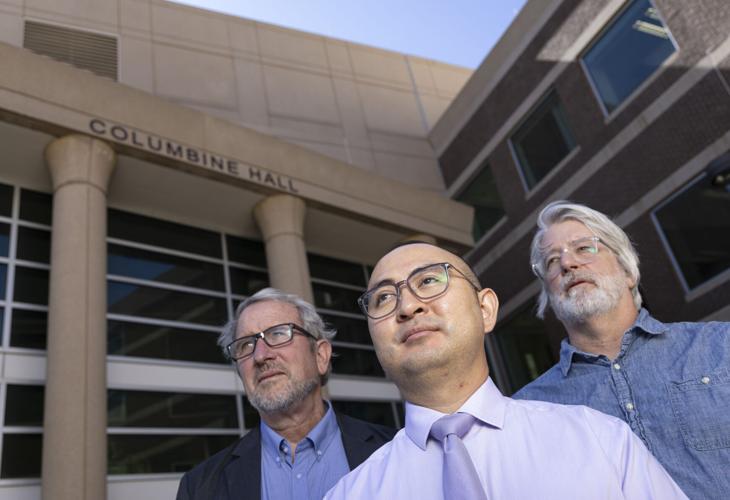
On November 21, passenger vehicles in Khyber Pakhtunkhwa’s (KP) Lower Kurram were attacked, resulting in 43 deaths while more than 30 people were injured. The casualties were confirmed by the Kurram Deputy Commissioner Javedullah Mehsud, adding that the deceased included seven women and a nine-year-old girl. The attack had occurred in the Mandori Charkhel area, a region with a history of sectarian tensions and land disputes.
Apparently, the convoy, consisting of approximately 200 vehicles, was on its way from Parachinar to Peshawar when it came under heavy gunfire and resulted in one of the biggest single mass-casualty attacks in Pakistan this year. According to witnesses, the vehicles were ambushed from four sides. The convoy consisted mostly of members of the Shia community.
The road, a vital lifeline for the District, had only recently reopened after being closed for three weeks because of an ambush on October 12 that left at least 16 people dead. During the closure, residents of Parachinar were cut off from essential supplies, including food and fuel, leading to a growing humanitarian crisis. In late July, a weeklong clash between Sunni and Shiite communities left 46 dead and hundreds injured.
Another bout of violence in September claimed 45 lives and wounded dozens. The intensity, frequency, and damage from these incidents are only increasing and exposing the failing credibility of both the provincial and federal governments. Pakistan’s KP Province Pakistan’s KP Province borders Afghanistan, and in this restive region, militancy, tribal disputes, and sectarianism have created a powder keg.
Kurram is particularly sensitive, mainly due to its sectarian dynamics and proximity to Afghanistan and the presence of heavily armed militant groups. In addition, local property disputes are being instrumentalised by militants to stoke sectarian tensions at will. The state has also been unable to de-weaponise the area or judiciously resolve the tribal disputes that constantly spiral out of control.
This year, a land dispute between two tribes spread into something uglier, with over eighty people killed since July, many of them while travelling by road. The people of Kurram had protested two weeks ago, demanding peace and safety on the roads. The latest attack once again revealed the inability of the state to provide them adequate protection.
Violent clashes between the Alizai, Bagan, Balishkhel, Kunj Alizai, and Maqbool tribes broke out. Educational institutions in Kurram have been closed due to the severe tension as both sides are targeting each other with heavy and automatic weapons. Videos as well as images posted on social media showed a market engulfed by fire and orange flames piercing the night sky.
Reportedly, 18 people have been killed and another 30 injured in these clashes. Thousands of people also participated in a sit-in in Parachinar, where protesters criticised the government’s failure to protect civilians. There have also been demonstrations in Lahore and Karachi.
Curfew has also been imposed in the area, and mobile services have been suspended. The Human Rights Commission of Pakistan accused the government of failing to protect citizens in Kurram and demanded “immediate and decisive steps from both governments to permanently break this cycle of violence”. As per reports, killers roam free in Bannu, Waziristan, and other Pakhtun regions, and attacks against ordinary people apart from security personnel and political workers have become an almost daily affair.
Religiously inspired militants sometimes acknowledge responsibility, but there are also a number of perpetrators who fall in the category of ‘unknowns’. The Underlying Reasons Kurram is a tribal belt known for its complex socio-political landscape and has been a longstanding hotspot for sectarian tensions between Shia and Sunni Muslims. Sometimes called the Parrot’s Beak because of how it extends into Afghanistan, it borders the Afghan provinces of Khost and Nangarhar.
The region has faced violence due to various factors, including historical grievances and land disputes. Its strategic location makes it vulnerable to conflicts. Locals say the conflict in Kurram stems from policies implemented by General Zia-ul-Haq, who, they believe, fostered hatred in the name of religion.
Over the decades, disputes between Shia- and Sunni-dominated areas have resulted in numerous casualties. While several agreements were reached between Shia and Sunni groups over the years, locals state that the government consistently failed to enforce these accords. They claim that the government’s negligence has left residents vulnerable to terror attacks and sectarian clashes.
The threat of violence is so ingrained that self-defence has become a way of life. Many people learn to use heavy weapons from a young age. Moreover, they allege that the state has not taken meaningful action against banned terrorist groups, such as the Tehreek-e-Taliban Pakistan (TTP), operating in Kurram.
There are also entrenched economic players in border trade. They extort money from transporters and shop owners in many of the tribal districts and take advantage of property disputes, particularly over agricultural land. They have also developed big stakes in the extraction of a host of natural resources, including pine nuts, timber, and mineral deposits.
But as Iqbal Malhotra pointed out in his latest book, ‘The Nukes, the Jihad, the Hawalas, and Crystal Meth: A Tale of Treachery’, there is also a thriving narcotics trade existing in the region and a dangerous nexus between these players and the deep state. The contraband trade across the Pak-Afghan borders implicates states, militants, and a host of other economic players. Violence is then both cause and consequence of this complex economy.
All the big players in this sordid story also revolve around the desire to either exclusively control economic flows or, at the very least, ensure that competitors do not establish monopolies in trade, mining, construction, and other sectors. Scenes of carnage, death, and destruction are now continuing to be witnessed as there is no critical reflection on the causes of the epidemic of violence in Pakistan’s Tribal Districts. So far, both the federal and provincial governments have not been able to control militancy or to settle tribal disputes that explode into tribal vendettas.
The resurgence of violence has escalated since the TTP ended the ceasefire agreement in 2022. The group’s activity has added another layer of insecurity in a region already plagued by sectarian and tribal conflicts. To provide justice to the victims of violence, terrorists and their facilitators must be tracked down and made to answer before the law.
Unfortunately, the local population is left to fend for themselves in the face of increasing terror incidents. No wonder mourners on November 22 demanded that “a transparent inquiry of this incident should be carried out”. They were innocent passengers.
What was their fault? Conclusion The violence has demonstrated the limited reach of Pakistan’s government in its tribal areas. Instability and violence can easily spread if not contained, and vested interests can exploit sectarian differences in the region to create discord. Apart from tracking down and punishing those responsible for the latest attack, all state institutions must ensure protection of the vulnerable population.
Moreover, along with state functionaries, religious leaders and tribal elders must also work to defuse the situation and ensure a retaliatory spiral of violence does not ensue. Unfortunately, there seems to be no strategy to deal with a situation spiraling completely out of control. The truth is that condemnation of ‘terrorism’ by those in power in Pakistan is unfortunately more lip service, as the existence of militancy is due to the support given to them by the state.
It is a different matter that Taliban 2.0 has not turned out the way Pakistan expected, and Pakistan has said that militants are finding shelter in Taliban-controlled Afghanistan, but national security seems to be just a handy catchphrase for a power game that is largely about social control and economic resources. The factors that have led to the re-emergence of the Pakistani Taliban and other militant groups need to be examined.
The underlying problem remains the militarised structure and the growth of the religious right and militant groups, which is a direct offshoot of this structure. But most important is the fact that Pakistan has been nurturing terrorists who are now biting the hand that fed them apart from leveraging fault lines to deepen divisions among people. The writing has always been on the wall.
The author is a retired Major General of the Indian Army. Views expressed in the above piece are personal and solely those of the author. They do not necessarily reflect Firstpost’s views.
.














